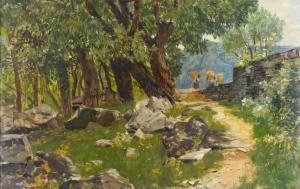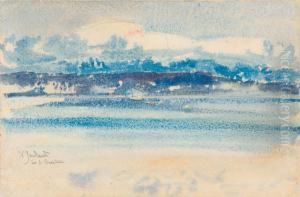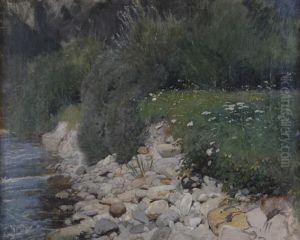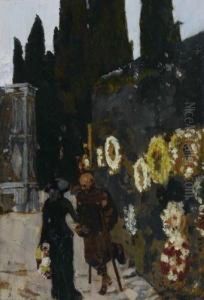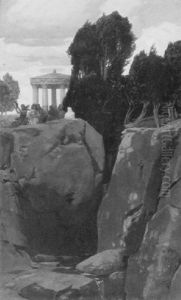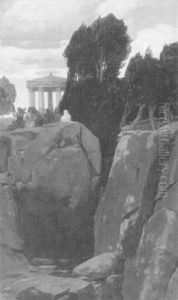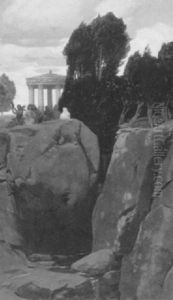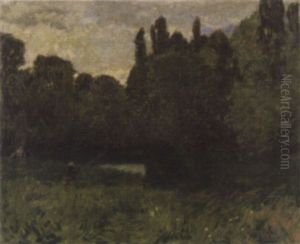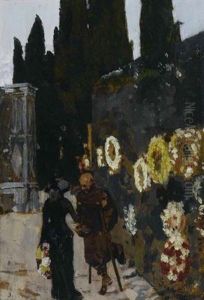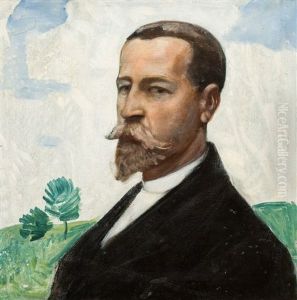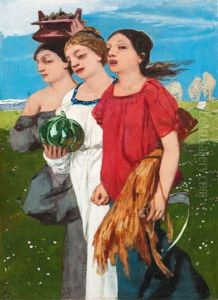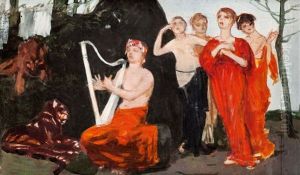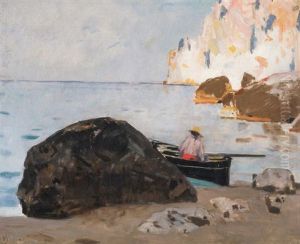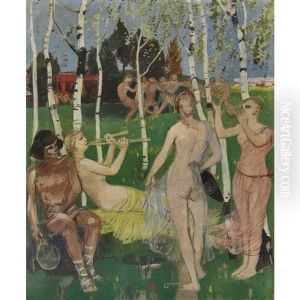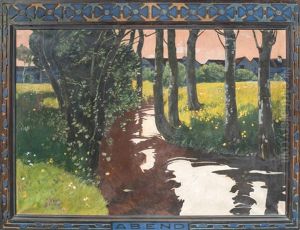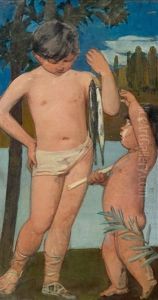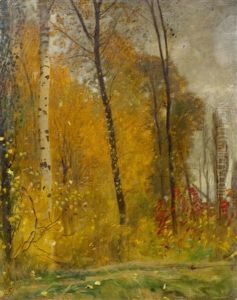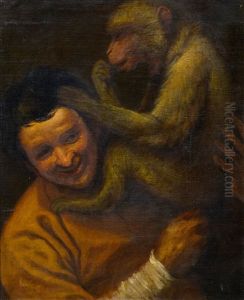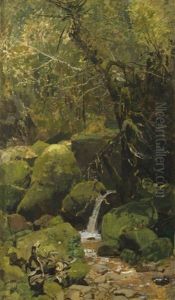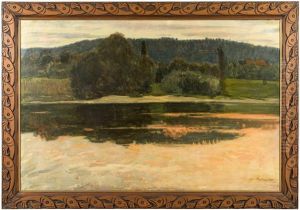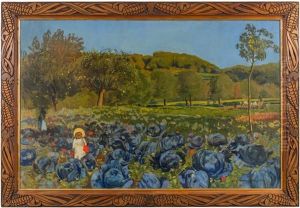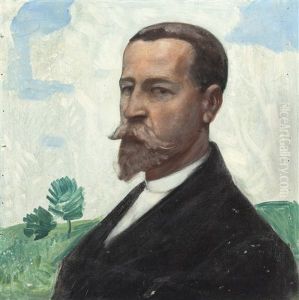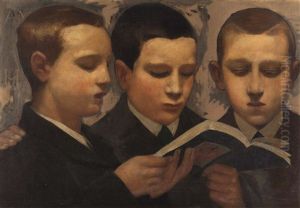Hans Sandreuter Paintings
Hans Sandreuter was a Swiss painter and artist born on August 12, 1850, in Basel, Switzerland. He is known for his contributions to Symbolism and is considered one of the notable Swiss artists from the late 19th century. Sandreuter initially trained as an architect before turning to painting, which would become his primary medium of expression.
Sandreuter was influenced by the works of Arnold Böcklin, another Swiss symbolist painter, who was a significant figure in the art world at that time. Sandreuter's artistic journey was marked by his exploration of mythological and allegorical themes, often imbued with a profound sense of mysticism and introspection. His works are characterized by a strong use of color and a tendency towards decorative and monumental compositions.
Although not as widely known as some of his contemporaries, Sandreuter made a substantial contribution to the Swiss art scene of the period. He was a part of the broader Symbolist movement that was reacting against the materialism and naturalism prevalent in the art of the 19th century. Symbolists sought to express the idea that behind the visible world, there was another, more mystical reality, and Sandreuter's paintings reflect this pursuit of depicting the unseen aspects of nature and human experience.
Throughout his career, Sandreuter also engaged in various other forms of artistic endeavors, including fresco painting and decorative arts, which further exhibited his versatility and commitment to his craft. His work was exhibited in various shows, and he was a contemporary to other Symbolist artists who were exploring similar themes across Europe.
Hans Sandreuter passed away at the age of 51, on December 23, 1901, in his hometown of Basel. His work remains a testament to the Symbolist movement in Switzerland and continues to be studied for its unique blend of Swiss folkloric elements with the universal themes of Symbolism. Even though he may not have achieved the same level of fame as some of his peers, his legacy lives on in the collections of Swiss museums and in the annals of art history as an integral part of the cultural heritage of Switzerland.
